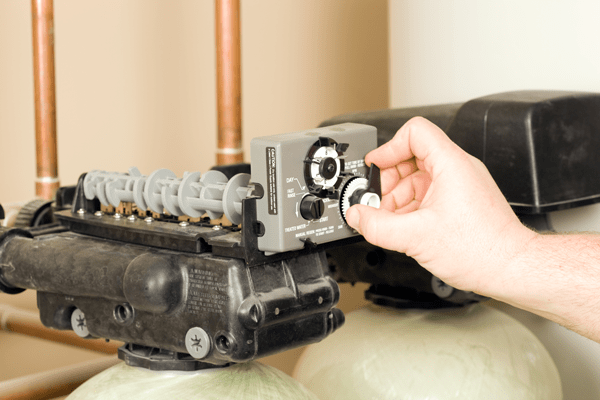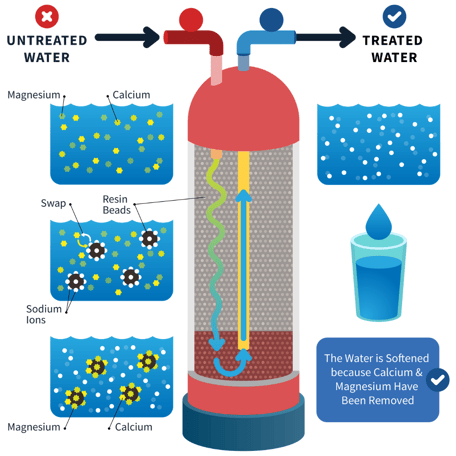Living with hard water can wreak havoc on your body and household. Hard water contains high levels of minerals, such as calcium and magnesium, which causes issues like scale build-up in pipes, dry skin, or a significantly decreased lifespan of household appliances. If you live in an area with hard water, having a water softener system in your home is a must. You probably should have one, but you may wonder how it works and which one is right for your home.
What does a water softener do?
Water softeners have three components that work together to remove the minerals from hard water, leaving your entire home with filtered, softened water. Parts of the water softener include:
- The Mineral Tank — where hard water flows to get filtered and softened.
- The Control Valve — measures the amount of water getting softened and flowing into your home.
- The Brine Tank — holds the brine solution of sodium chloride.
How do water softeners work?
Water softeners remove minerals from water through a process called ion exchange. Untreated, hard water filters through resin beads, removing dirt or sediment. Then a sodium chloride brine solution flows into the mineral tank, where the calcium and magnesium particles attach themselves to the sodium ions. This process leaves you with filtered, soft water. The water softener regeneration cycle varies between either a four-step and five-step process, but the options at Advantage Water Conditioning follow the five-step process.
Four-step regeneration cycle
- Backwash - Water flows up through the resin tank at a fast flow rate. The accumulated iron, dirt, and sediment are flushed from the resin bed and into the drain.
- Brining and Brine Rinse - Brine travels up through the resin tank with suction for cleaning. The brine valve then closes, and water flushes the minerals and resin into the drain.
- Fast Rinse - A fast flow of water is sent through the resin tank and flushes brine from the bottom of the tank.
- Brine Refill - Water is returned to the brine tank and mixed with salt. The softener will then revert to the Service cycle.
Five-step regeneration cycle
- Backwash - Water flows up through the resin tank at a fast flow rate. The accumulated iron, dirt, and sediment are flushed from the resin bed and into the drain.
- Brining and Brine Rinse - Brine travels up through the resin tank with suction for cleaning. The brine valve then closes, and water flushes the minerals and resin into the drain.
- Backwash - A repeat of step one for additional filtering.
- Fast Rinse - A fast flow of water is sent through the resin tank and flushes brine from the bottom of the tank.
- Brine Refill - Water is returned to the brine tank and mixed with salt. The softener will then revert to the Service cycle.

How do Advantage water softeners work?
All water softeners use brining and brine rinse in the same step. Once all the water moves from the brine tank, an air check stops the softener from going to the brine rinse. Our softeners refill the brine tank last to create a stronger brine solution, allowing for a more thorough regeneration and greater capacity. The tank-in-tank softeners like GE use a fill first to keep the brine tank from salt bridging. This issue is less of a concern for our units thanks to the separate salt tank.
Check out the different systems we offer for residential water softeners. If you’re still unsure which system best fits your home, contact our friendly pros for assistance with finding the best solution.






